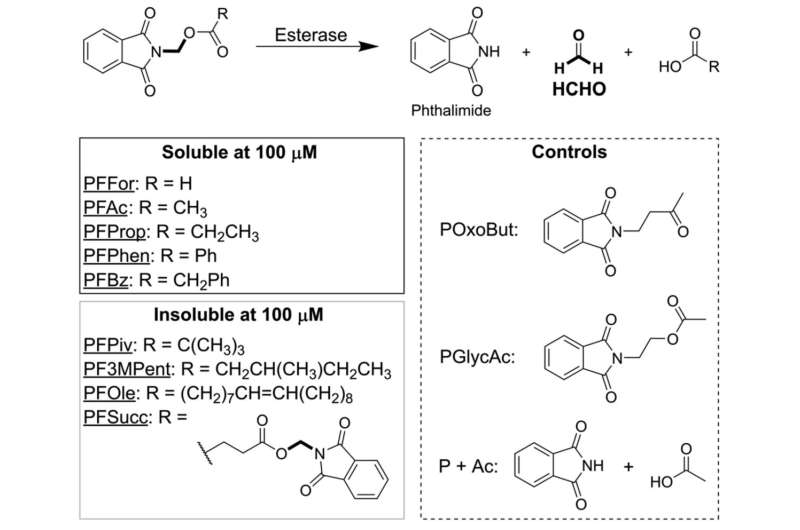This article has been reviewed according to Science X's editorial process and policies. Editors have highlighted the following attributes while ensuring the content's credibility:
fact-checked
peer-reviewed publication
trusted source
proofread
A new chemical tool for probing toxic formaldehyde's dual nature

Compounds developed by University of Leicester Chemists aim to reveal the dual nature of formaldehyde, a chemical that is known to cause cancer but is also believed to play important roles in our biology.
The compounds are detailed in a new study in the journal Chemical Science and potentially allow scientists to study a chemical that is present in all living things but which has so far proven too volatile and too reactive to study with ease.
Formaldehyde is prevalent in nature and also has a variety of uses such as a glue and a sterilizing agent, famously used in artworks by Damien Hirst. It is also known to be a human toxin and carcinogen (has the potential to cause cancer) in high doses. Formaldehyde is also produced within our cells and it is present in animals and in plants. Scientists are seeing growing evidence that formaldehyde plays an important role in our biology despite its potential toxicity, giving it a dual nature much like the literary characters of Dr. Jekyll and Mr. Hyde.
However, studying formaldehyde inside a cell is challenging because of its volatility and reactivity. It is important to understand what makes the molecule toxic and carcinogenic as this could help scientists to find ways to prevent or treat those effects.
To probe its impact on our cells more accurately, a team at the University of Leicester with collaborators at the University of Oxford have developed a new library of compounds designed to release formaldehyde in cells in controlled amounts that can be used to more precisely to measure its effects. They are partly inspired by compounds used in the cosmetics industry that release low levels of formaldehyde over time.
Dr. Richard Hopkinson from the University of Leicester Institute for Structural and Chemical Biology said, "The scientific community ideally needs ways to deliver formaldehyde in a quantifiable, controllable way that is reproducible. The problem is that formaldehyde's high reactivity and volatility makes that really challenging."
Formaldehyde is linked to a number of different types of cancer, particularly with nose and throat cancers from inhaling formaldehyde, but it is often difficult for scientists to draw a conclusive link between formaldehyde exposure and the onset of disease.
However, Dr. Hopkinson notes that there is also emerging evidence suggesting that formaldehyde plays a role in our metabolism. "We are producing formaldehyde all the time inside us but it is a very reactive chemical and most things in biology are not that reactive."
"We think it might actually be an important nutrient, not just a toxin, but that having too much or even too little formaldehyde could tip us over the edge into disease. If we can work out exactly what formaldehyde is doing inside cells, hopefully we can begin to answer these important questions."
More information: Vicki L. Emms et al, N-Acyloxymethyl-phthalimides deliver genotoxic formaldehyde to human cells, Chemical Science (2023). DOI: 10.1039/D3SC02867D
Journal information: Chemical Science
Provided by University of Leicester





















